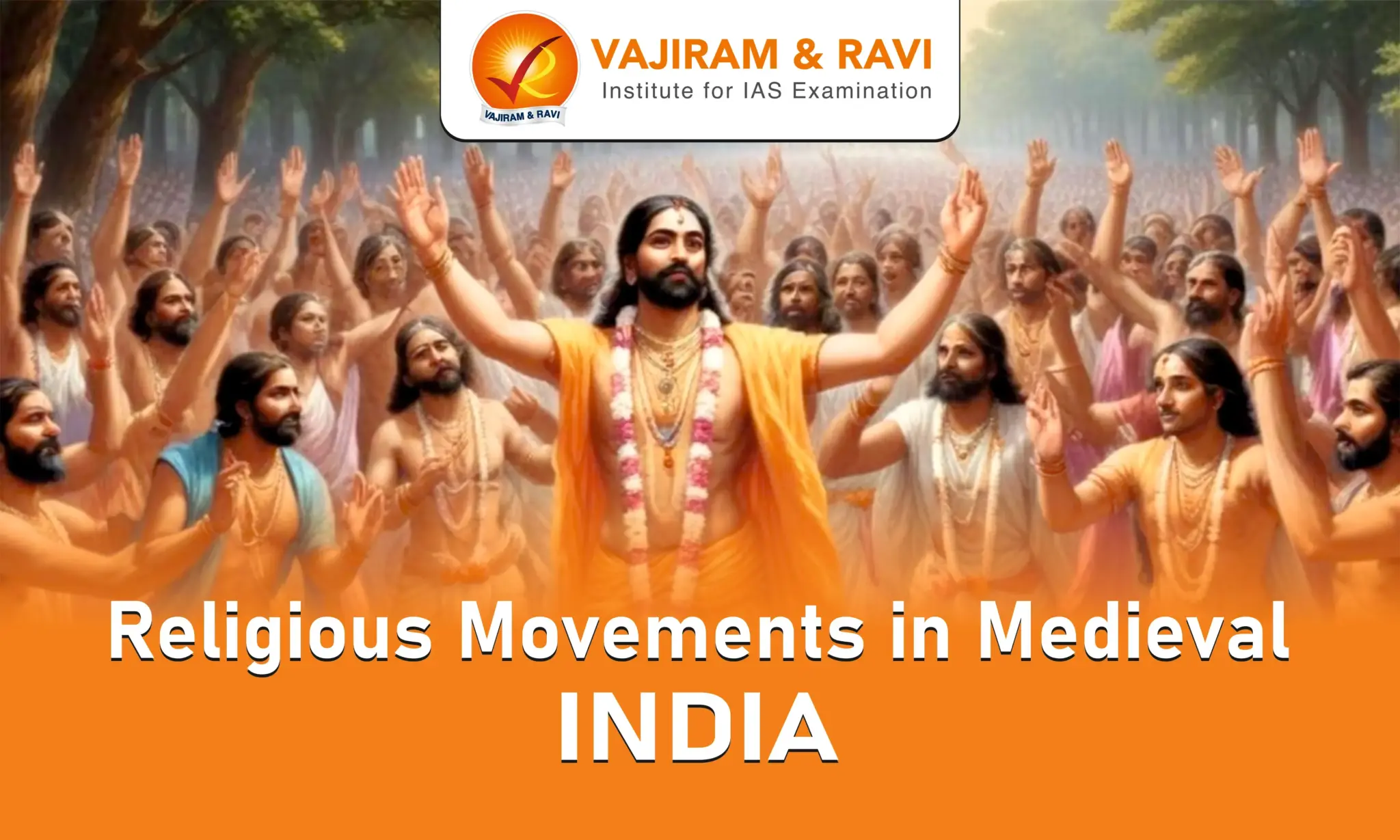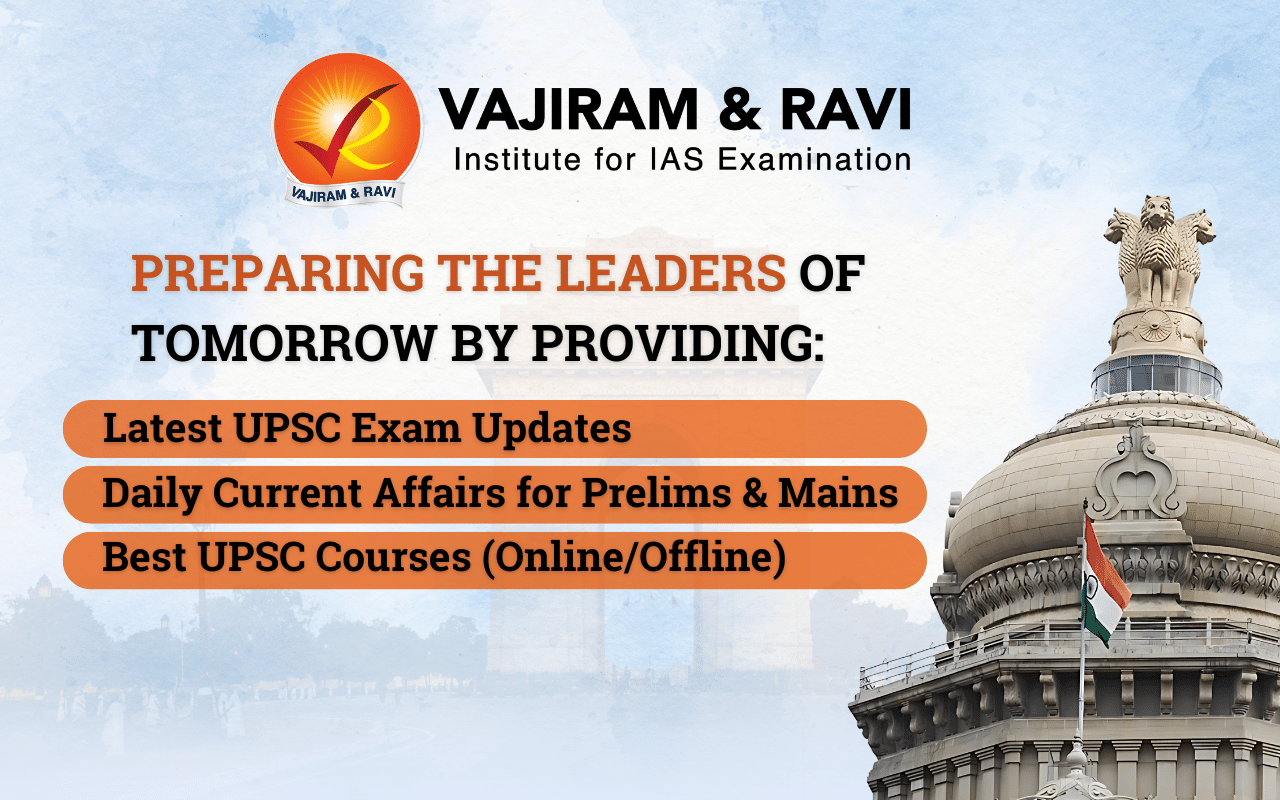The medieval period in India, spanning from the 7th to the 17th century CE, witnessed a vibrant and diverse religious landscape. Several religious movements emerged, flourished, and influenced the social, cultural, and political fabric of the subcontinent during this time. Religious movements like Bhakti, Sikhism, and Sufism challenged hierarchies and promoted equality and love.
These religious movements and traditions, while distinct in their beliefs and practices, often overlapped and influenced one another, creating a rich tapestry of spiritual and cultural exchange. The medieval period witnessed a vibrant intellectual discourse, artistic expression, and the dissemination of religious ideas, contributing to the diversity and pluralism that continues to characterise the religious landscape of modern-day India.
Religious Movements in Medieval India
In Medieval India, religious movements resembled a vibrant mosaic formed by diverse factors: socio-political changes, economic shifts, and cultural interactions. With the decline of the Gupta Empire, new movements like Bhakti and Sufism arose, bringing forth novel ideas and outlooks. These movements weren’t solitary; they were shaped by local reactions and external influences, resulting in a dynamic fusion of philosophical, social, and spiritual changes across the region.
Religious Movements Causes
- Socio-political fragmentation and centralization: The Gupta Empire’s decline led to regional fragmentation, allowing Buddhism and Jainism to thrive under local patronages, while the Delhi Sultanate and Mughal Empire centralized efforts, facilitating Islam’s spread and influencing the religious landscape.
- Economic changes and urbanisation: The Silk Road and maritime trade routes under Cholas facilitated cultural exchanges, attracting Islamic traders and settlers to India, particularly in coastal regions like Kerala.
- Caste system and social stratification: The Bhakti movement, led by Ramananda, challenged the caste hierarchy by promoting devotion that transcends social barriers and accepting disciples from various castes.
- Cultural and intellectual exchanges: During the Mughal era, Akbar‘s translation projects at Fatehpur Sikri court showcased cross-cultural intellectual exchanges that enriched religious discourse through the translation of Hindu and Buddhist texts.
- Mystical and devotional trends: Tamil saints Alvars and Nayanars’ devotional hymns, praising Vishnu and Shiva, influenced a shift towards personal devotion (bhakti) away from ritualistic Brahmanical practices.
- External influences and indigenous responses: Khwaja Moinuddin Chishti introduced Sufism, blending Islamic teachings with Indian customs, demonstrating the indigenous adaptation to external religious influences.
Evolution and Manifestation
The evolution of Hinduism and Buddhism has been shaped by a multitude of movements, such as the Bhakti and Sufi movements, Hindu revival and reform, the emergence of Sikhism, changes within Buddhism and Jainism, regional variations, and philosophical advancements. These movements have left a profound impact on Indian society, fostering religious syncretism, regional distinctions, and a deeper personal comprehension of Brahman.
Bhakti Movement
The Bhakti movement was prominent between the 7th and 17th centuries CE, it emphasised devotion and love for the divine. It emerged as a response to ritualism and social stratification, advocating spiritual equality. Tracing its roots to Vedic texts, the movement gained momentum in South India with the rise of Nayanars and Alvars and eventually spread to North India.
- Reasons behind rise of the Bhakti Movement
- It emerged due to a reaction against excessive Hindu ritualism, Buddhist and Jain teachings on compassion, Islamic influences, and social and political upheaval caused by foreign invasions and the decline of traditional Hindu kingdoms.
- Salient Features: The Bhakti movement, characterised by principles of unity, equality, devotion, and abandonment of discriminatory practices, emphasised a personal, loving relationship with the divine.
- It rejected multiple deities, emphasised the importance of devotion over complex rituals, and urged followers to abandon discriminatory caste practices and social hierarchies.
- Schools of Thought of Bhakti Movement
- Nirguna Bhakti and Saguna Bhakti are two schools of thought in the Bhakti movement. Nirguna Bhakti emphasizes unconditional devotion to God in an unmanifested form, while Saguna Bhakti worships a revealed deity with attributes, form, or incarnation.
- Virashaiva/Lingayat Tradition:
- The Virashaiva/Lingayat movement, led by philosopher Basavanna, was a 12th-century Hindu religious and social reform movement in Karnataka.
- It rejected caste system, ritualism, and idol worship, and advocated for egalitarian principles, simplicity, and upliftment of marginalised communities.
- Nathpanthis, Siddhas, and Yogis: Nathpanthis, Siddhas, and Yogis are closely related spiritual traditions, known for their pursuit of spiritual enlightenment and mystical powers.
- Nathpanthis emphasises control over the body and mind through yoga and tantra practices
- Siddhas attain spiritual perfection and mastery over supernatural abilities
- Yogis integrate physical, mental, and spiritual practices for self-realisation.
Sufism
Sufism, the mystical and spiritual dimension of Islam, originated in the 7th century CE among ascetic Muslim scholars and spiritualists in the Middle East. It emphasises the pursuit of divine love, rejection of worldly possessions, and spiritual purification through practices like dhikr (remembrance of God) and Sama (spiritual music). Sufism began in India in the 11th century CE through the travels and teachings of Sufi saints and mystics from Central Asia and Persia.
- Features of Sufism: It emphasises devotion and love, mystical practices, spiritual guides, a structured spiritual path, inner purification through dhikr and muraqaba, and promotes tolerance, humility, and universal brotherhood.
- It has a lasting impact on Indian culture, music, and literature, influencing various orders.
- Sufi Orders: Sufi orders in India are divided into Ba-shara, which follows Islamic Law, and Be-shara, which is more liberal.
- Saints are organised into twelve silsilas with distinct spiritual practices, lineages, and teachings.
- Major Sufi orders include Chishti Silsilah, Suhrawardi Silsilah, Naqshbandi Silsilah, Qadri Silsilah, and Firdausi Silsilah.
Sikhism
Sikhism is a monotheistic religion founded by Guru Nanak Dev in the 15th century in the Punjab region. The core principles of Sikhism include belief in one formless God, equality of all human beings, honest living, and service to humanity.
- Features: Sikhism is a monotheistic religion with ten Sikh Gurus, focusing on a formless God, and rejecting the caste system and ritualism.
- It emphasises service to humanity, maintains a distinctive identity through the Five Ks, and has important institutions like Gurdwara and Langar.
Religious Movements in Medieval India Impact
Religious movements during the mediaeval period had a significant influence. It supported regional languages and promoted religious awakening and toleration. But it also encountered difficulties, such as opposition from authorities and rifts within Hindu culture:
- Social Transformation: The Bhakti movement notably broke caste barriers, for instance, Sikhism’s langar, a communal kitchen where all, regardless of caste, dine together.
- Cultural and Literary Renaissance: Bhakti and Sufi movements fostered regional languages and literature, evident in Tulsidas’ Hindi, Kabir’s blend of Hindi and Urdu, and Gurbani in Punjabi poetry.
- Political Engagement and Patronage: Akbar’s Din-i Ilahi aimed at a fusion of religions including Islam, Hinduism, Christianity, and Zoroastrianism, showcasing his embrace of diverse religious thought.
- Religious Syncretism and Pluralism: The Ajmer Sharif shrine, venerated by Hindus and Muslims, epitomises the syncretic spirituality stemming from Sufism’s interaction with Hindu traditions.
- Institutional and Community Building: Sikh Gurdwaras serve as both places of worship and community hubs, illustrating how religious movements bolstered community cohesion and welfare.
- Shifts in Religious Authority and Practice: The Guru Granth Sahib’s dissemination as Sikhism’s primary text decentralised religious authority, transferring power from priests to the scripture and the community.
Religious Movements in India UPSC PYQs
Question 1: Evaluate the nature of Bhakti Literature and its contribution to Indian culture. (UPSC Mains 2021)
Question 2: The Bhakti movement received a remarkable re-orientation with the advent of Sri Chaitanya Mahaprabhu. Discuss. (UPSC Mains 2018)
Question 3: Sufis and medieval mystic saints failed to modify either the religious ideas and practices or the outward structure of Hindu / Muslim societies to any appreciable extent. Comment. (UPSC Mains 2014)
Question 4: The world’s second tallest statue in sitting pose of Ramanuja was inaugurated by the Prime Minister of India at Hyderabad recently. Which one of the following statements correctly represents the teachings of Ramanuja? (UPSC Prelims 2022)
- The best means of salvation was devotion.
- Vedas are eternal, self-existent and wholly authoritative.
- Logical arguments were essential means for the highest bliss
- Salvation was to be obtained through meditation.
Answer: (a)
Question 5: With reference to the cultural history of medieval India, consider the following statements:
- Siddhas (Sittars) of Tamil region were monotheistic and condemned idolatry.
- Lingayats of Kannada region questioned the theory of rebirth and rejected the caste hierarchy.
Which of the statements given above is/are correct? (UPSC Prelims 2016)
- 1 only
- 2 only
- Both 1 and 2
- Neither 1 nor 2
Answer: (c)
Last updated on April, 2025
→ UPSC Notification 2025 was released on 22nd January 2025.
→ The UPSC Vacancy 2025 were released 1129, out of which 979 were for UPSC CSE and remaining 150 are for UPSC IFoS.
→ UPSC Admit Card 2025 is expected to release in first week of May for CSE Prelims Exam 2025.
→ The UPSC Prelims 2025 is scheduled to be conducted on 25th May 2025 and UPSC Mains 2025 will be conducted on 22nd August 2025.
→ Apply once through it and aspirants can apply for various government exams conducted by UPSC.
→ The UPSC Selection Process is of 3 stages-Prelims, Mains and Interview.
→ UPSC Result 2024 is released with latest UPSC Marksheet 2024. Check Now!
→ UPSC Toppers List 2024 is released now. Shakti Dubey is UPSC AIR 1 2024 Topper.
→ Also check Best IAS Coaching in Delhi
Religious Movements in India FAQs
Q1. What were the major religious movements during the Medieval Period?+
Q2. Is Bhakti movement in North India similar to Bhakti movement in South India?+
Q3. What are the similarities between Bhakti and Sufi Movement?+
















